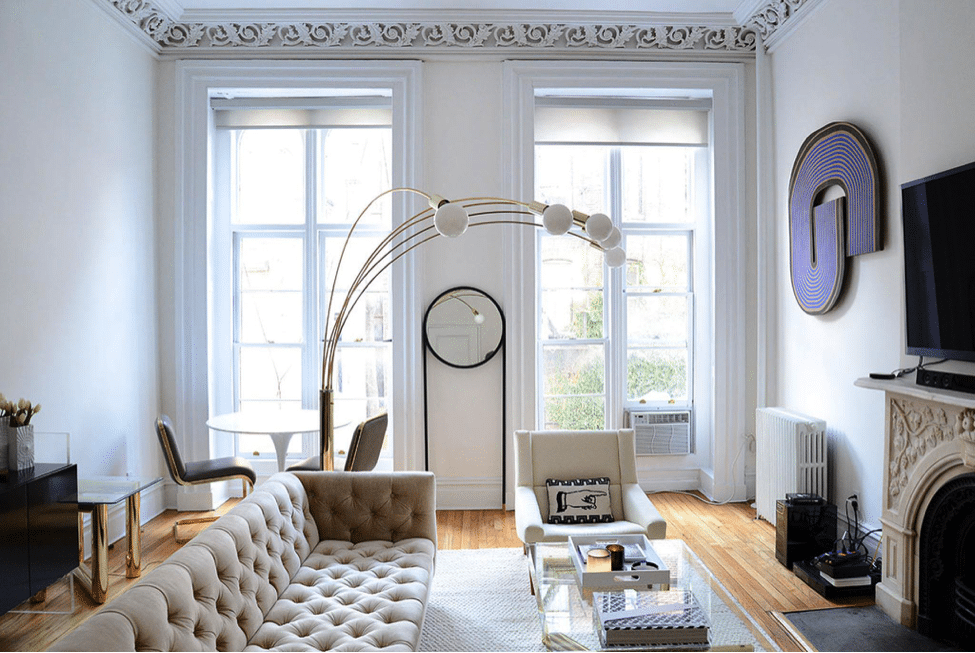How Noa Santos, Founder of Homepolish, is Rethinking the Interior Design Space

Skift Take
This sponsored content was created in collaboration with a Skift partner.
The Unbound Collection by Hyatt and SkiftX present The Freedom to be Extraordinary content series, which explores how breaking free from convention can lead to extraordinary success. These conversations will reveal how leading innovators and entrepreneurs approach creativity and how they’re embracing the freedom to be extraordinary.
Noa Santos, the CEO and founder of Homepolish, an online and in-home interior design company, has had an appreciation for beautiful homes for as long as he can remember. After graduating from Stanford with a degree in architecture and business, Santos moved to New York City where he snagged an interior design job through a friend. He spent a year working at the firm, but soon became fed up with the extravagant pricing and markups within the industry. Santos was more interested in working with young and aspiring New Yorkers, so he forged a plan to provide affordable and accessible design assistance to the underserved demographic.
While traditional designers were charging clients flat-rate designer fees, consultation fees, and ridiculous commissions on furniture purchases, Santos was determined to keep his business simple and accessible. He would offer up his services for an affordable hourly rate. A few months into his new endeavor, Santos was hired by his future business partner, Buzzfeed coder Will Nathan, to design his small Chelsea loft. Nathan revealed to Santos how difficult it was for him to find a designer to work on his small space for a reasonable price.
Nathan and Santos believed there should be a way to offer design services without the hefty price tags and ego found in the current industry. The two decided to ditch the commission aspect of designing altogether — which often encouraged designers to up-sell their clients in order to earn more commission — and allow clients to work with designers to figure out their needs, rather than being told what they needed. With Santos’ hourly rate system already in place, the Homepolish founders came up with the idea of scaling the service to offices and homes across the country. The duo leveraged Nathan’s tech savvy background with Santos’ business and design acumen to create Homepolish, a fun and accessible alternative to design.
Homepolish pairs prospective clients with its catalogue of over 500 heavily-vetted designers based on their needs and budget. Once a client is matched with a designer, an in-home consultation is then scheduled if the person is located nearby, or the designer and client meet virtually via Skype or Facetime. If the client decides to move forward, they then pay for the estimated hours it will take to complete the job. “Homepolish designers execute projects end to end, all the way from ideation to completion. It gives people the luxury of a full-service design experience,” says Santos. And rather than gain commission on furniture purchases, Homepolish designers negotiate discounts for clients with over 250 partners, including West Elm and Restoration Hardware.
 A West Village apartment designed by a Homepolish designer.
A West Village apartment designed by a Homepolish designer.
Since Homepolish’s inception, numerous companies have followed the online design path. But Santos believes Homepolish remains in its own lane, primarily due to the company’s efforts in featuring up-and-coming designers. While many firms shy away from inexperienced talent, Homepolish embraces them with open arms — many of whom don’t even have portfolios. “I am not someone who spent a decade in a design firm. I think that's what's really interesting about having emerging talent,” he says. “They don't need to break free from a lot of convention because they haven't been steeped in it. What's great is that they already come with this irreverent distaste for a lot of rules.”
Another way Homepolish distinguishes itself from competitors is through the company’s personal touch with clients. Many e-design firms, Santos says, simply assist clients with design ideas and shopping lists only to hand it over to the client to finish on their own. “It's like asking a painter to sketch out a painting and then having his client finish it. They don't actually get to own the execution of their work, and at the end, they don't actually have anything to show for it aside from a couple of bucks,” says Santos.
Homepolish, however, believes in working closely with clients from start to finish and making the in-person connection. Whenever possible, designers meet face-to-face with clients. “As soon as you have a design partner there to work alongside you, and you see the end result, you understand that this formally daunting process doesn't necessarily have to be that daunting,” says Santos. And in the end, the newbie designer has something to add to his portfolio. “Traditional firms don’t allow new designers to really explore their style. You don't get to work personally with clients, but at Homepolish, you're on your own,” he says. “We’re allowing designers to have a whole different career path and letting them start their businesses a lot earlier. Right now, Homepolish is really the only place that's actually doing that.”
The design company embraced the same convention-defying mentality when it chose to remain self-funded for its first three and a half years. Despite being difficult, Santos says the experience required the company to be resourceful and find innovative solutions that traditional startups necessarily wouldn’t need to.
In January 2016, the company raised its first round of outside funding — $20 million led by Warby Parker founder Andy Hunt — with plans to expand the company’s client offerings. Homepolish’s founders wanted to ensure the company was profitable before accepting investment money and that they were partnering with the right people. “If you're going to take the leap [to accept funding], then you have to trust the people that you're bringing into the company. It's more difficult to get out of than a marriage,” says Santos. “I think one of the advantages of raising capital as a profitable company is that you can, to some degree, influence the terms and make sure that your company is as protected as possible.” Santos says the influx in cash flow will go towards improving the company's infrastructure, expanding tools offered to designers, and building out the team at Homepolish's New York headquarters.
As someone who decorates his space often, the Homepolish founder is amazed by how many people fail to put an effort in their personal and professional space. “The spaces you're in have such a profound impact on your happiness, your productivity, the way you sleep, the way you entertain, and the way you socialize,” says the designer. “There's so many ripple effects from those spaces. The fact that people don't want to put the energy towards thinking about it is kind of a shame.” When decorating his own home, Santos pulls from a variety of inspirations, ranging from Homepolish’s own designers’ work to traveling abroad. “Anytime I travel I'm influenced by where I've been,” he says. “I love to stay in beautiful homes, whether I’m in Paris or Marrakesh.”
Decorating a home can often feel like a tedious and overwhelming job, but Santos hopes in the future, Homepolish will succeed in revolutionizing the way people view home decor. “We think a home should be treated like a wardrobe. No one ever says, ‘I’m going to build my wardrobe in six months and I’m not going to touch it again for five years.’ If that were the case, then a lot of people would probably have pretty bad style,” quips Santos. “We want people to think about their homes the way they look at their wardrobe. It should be a constant reflection of where you are in your life, what's important to you, and what you want the perception of yourself to be.”




